Related Research Articles
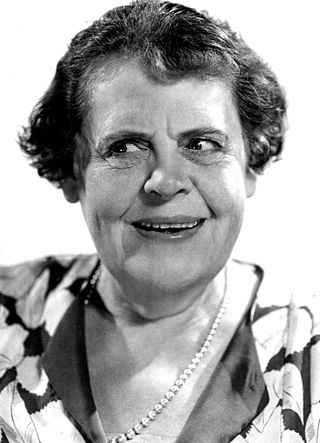
Leila Marie Koerber, known by her stage name Marie Dressler, was a Canadian stage and screen actress, comedian, and early silent film and Depression-era film star.

Rose Joan Blondell was an American actress who performed in film and television for 50 years.

Visual anthropology is a subfield of social anthropology that is concerned, in part, with the study and production of ethnographic photography, film and, since the mid-1990s, new media. More recently it has been used by historians of science and visual culture. Although sometimes wrongly conflated with ethnographic film, visual anthropology encompasses much more, including the anthropological study of all visual representations such as dance and other kinds of performance, museums and archiving, all visual arts, and the production and reception of mass media. Histories and analyses of representations from many cultures are part of visual anthropology: research topics include sandpaintings, tattoos, sculptures and reliefs, cave paintings, scrimshaw, jewelry, hieroglyphics, paintings and photographs. Also within the province of the subfield are studies of human vision, properties of media, the relationship of visual form and function, and applied, collaborative uses of visual representations.
Bruce Conner was an American artist who worked with assemblage, film, drawing, sculpture, painting, collage, and photography.
Nightmare Alley is a 1947 American film noir directed by Edmund Goulding from a screenplay by Jules Furthman. Based on William Lindsay Gresham's 1946 novel of the same name, it stars Tyrone Power, with Joan Blondell, Coleen Gray, and Helen Walker in supporting roles. Power, wishing to expand beyond the romantic and swashbuckler roles that brought him to fame, requested 20th Century Fox's studio chief Darryl F. Zanuck to buy the rights to the novel so he could star as the unsavory lead "The Great Stanton", a scheming carnival barker.

Timothy Asch was an American anthropologist, photographer, and ethnographic filmmaker. Along with John Marshall and Robert Gardner, Asch played an important role in the development of visual anthropology. He is particularly known for his film The Ax Fight and his role with the USC Center for Visual Anthropology.

Edmund Goulding was a British screenwriter and film director. As an actor early in his career he was one of the 'Ghosts' in the 1922 silent film Three Live Ghosts alongside Norman Kerry and Cyril Chadwick. Also in the early 1920s he wrote several screenplays for star Mae Murray for films directed by her then husband Robert Z. Leonard. Goulding is best remembered for directing cultured dramas such as Love (1927), Grand Hotel (1932) with Greta Garbo and Joan Crawford, Dark Victory (1939) with Bette Davis, The Constant Nymph (1943) with Joan Fontaine, and The Razor's Edge (1946) with Gene Tierney and Tyrone Power. He also directed the classic film noir Nightmare Alley (1947) with Tyrone Power and Joan Blondell, and the action drama The Dawn Patrol. He was also a successful songwriter, composer, and producer.
Edmund "Ted" Snow Carpenter was an American anthropologist best known for his work on tribal art and visual media.
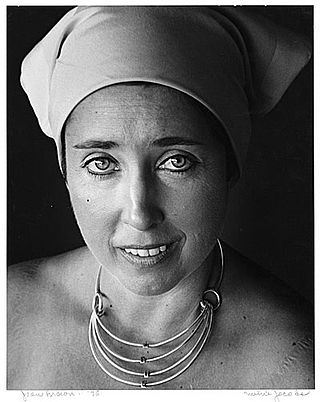
Joan Brown was an American figurative painter who lived and worked in Northern California. She was a member of the "second generation" of the Bay Area Figurative Movement.
Donald Spoto was an American biographer and theologian. He was known for his bestselling biographies of people in the worlds of film and theater, and for his books on theology and spirituality.
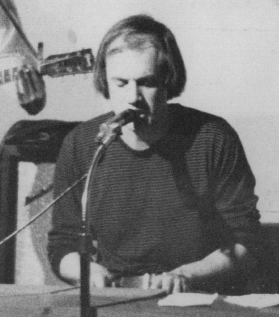
Ron Nagle is an American sculptor, musician and songwriter. He is known for small-scale, refined sculptures of great detail and compelling color.
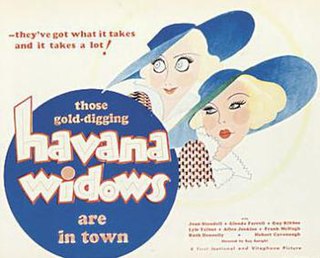
Havana Widows is a 1933 American pre-Code comedy film directed by Ray Enright, starring Joan Blondell and Glenda Farrell. It was released by Warner Bros. on November 18, 1933. Two chorus girls travel to Havana in search of rich husbands. Their target is Deacon Jones, a self-appointed moralist who cannot drink without getting drunk.

Gloria Blondell was a stage, film, and television actress who was the younger sister of actress Joan Blondell.
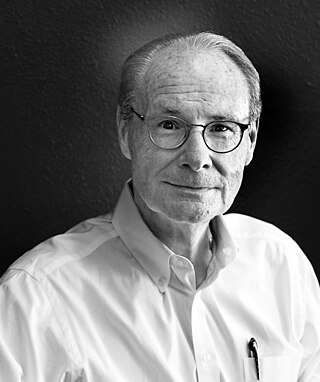
D. J. Waldie is an American essayist, memoirist, translator, and editor who also is the former Deputy City Manager of Lakewood, California.
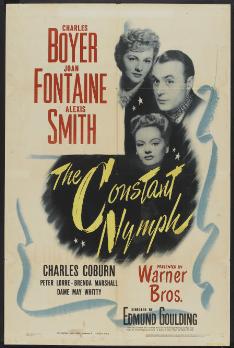
The Constant Nymph is a 1943 romantic drama film starring Charles Boyer, Joan Fontaine, Alexis Smith, Brenda Marshall, Charles Coburn, May Whitty, and Peter Lorre with a famous score by Erich Wolfgang Korngold. It was adapted by Kathryn Scola from the 1924 novel of the same name by Margaret Kennedy and the 1926 play by Kennedy and Basil Dean and directed by Edmund Goulding.

Edward Scissorhands is a contemporary dance adaptation of the 1990 American romance fantasy film Edward Scissorhands, created by Matthew Bourne, with music by Terry Davies. The screenwriter and composer of the film version, Caroline Thompson and Danny Elfman, helped to develop the dance version, which is set in the 1950s. The story is told entirely through music and dance with no discourse although the plot is similar to the movie.

Women Love Diamonds is a 1927 American black and white silent melodrama directed by Edmund Goulding and starring Pauline Starke, Owen Moore, and Lionel Barrymore.
Michael Ernest Sweet is a Canadian photographer, writer, and educator. He is the author of two books of street photography, The Human Fragment and Michael Sweet's Coney Island.

A Man of Stone is a 1921 American silent drama film directed by George Archainbaud and starring Conway Tearle, Betty Howe, and Martha Mansfield.

The Dancers is a 1925 American silent drama film directed by Emmett J. Flynn and starring George O'Brien, Alma Rubens, and Madge Bellamy. It is an adaptation of the 1923 play The Dancers by Viola Tree and Gerald du Maurier. It was remade by Fox Film five years later as a sound film The Dancers.
References
- ↑ “Redding native chronicles unlikely star’s life.” Redding Record-Searchlight, 21 October 1999.
- ↑ New York Public Library for the Performing Arts
- ↑ City College of San Francisco
- ↑ Silver Screen Oasis
- ↑ National Board of Review Archived 2011-12-18 at the Wayback Machine
- ↑ "Smooth Reading - Featuring over 250,000 books in 35 different categories". Archived from the original on 2016-03-23. Retrieved 2022-07-13.
- ↑ John McWhorter's Review
- ↑ Bright Lights Film Journal
- ↑ “Matthew Kennedy wins Cable Car Award.” City Currents (Marketing and Public Information Office of City College of San Francisco). May 1995. Retrieved 17 August 2011.
- ↑ Anonymous. Who’s Who Among America’s Teachers (2000), p. 316.
- ↑ “Matthew Kennedy Named Community College Honors Program Faculty Member of Year 2011”. City Currents (Marketing and Public Information Office of City College of San Francisco). 13 June 2011. Retrieved 17 August 2011.
- ↑ Block, Alex Ben and Lucy Autrey Wilson, editors. George Lucas’s Blockbusting (2010), p. ix.
- ↑ Saltz, Rachel (21 December 2007) “Joan Blondell: The Blond Bombshell from 91st Street.” The New York Times. Retrieved 17 August 2011.
- ↑ Museum of Modern Art Film Exhibitions
- ↑ Pacific Film Archive Joan Blondell retrospective Archived 2011-09-27 at the Wayback Machine